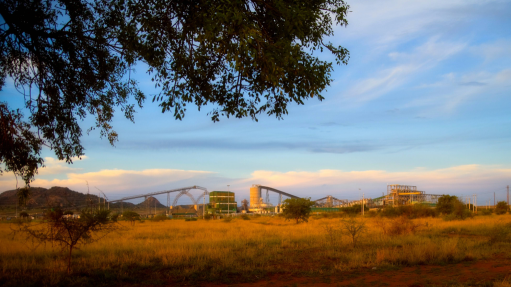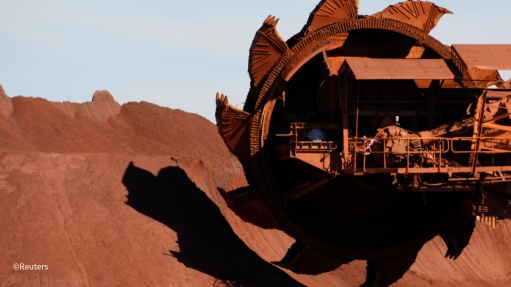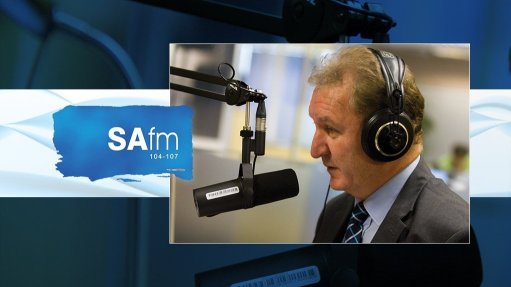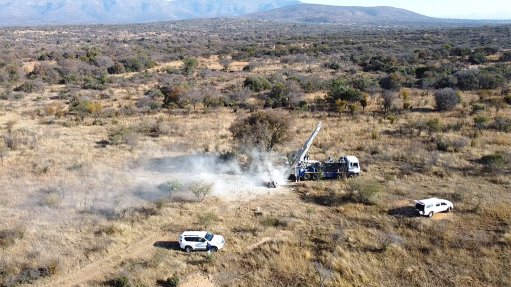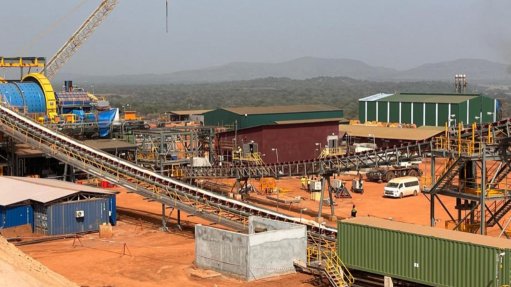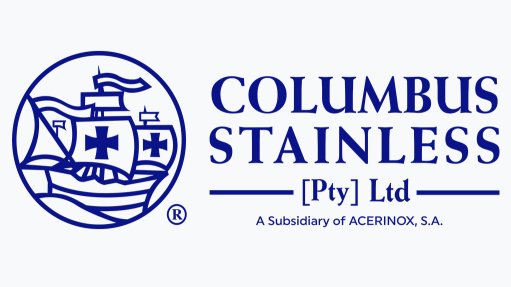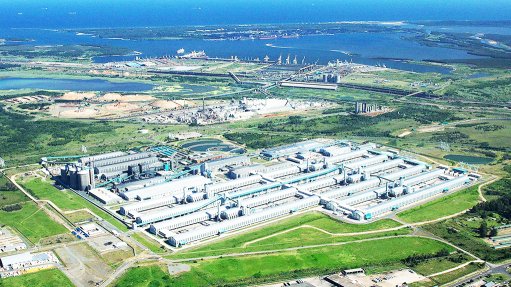IPP shares project development insights after 15 yrs in sector


ANESU GWATA In the next five to ten years, many more solar projects will come online with less competition for the land use and better grid access
South Africa’s Renewable Energy Independent Power Producer Procurement Programme (REIPPPP) and the growth of its commercial and industrial renewable-energy space is a good blueprint for the development of projects in the rest of Africa.
“There are phenomenal opportunities for growth in the African market. There are many areas in sub-Saharan Africa that lack access to electricity and present a substantial opportunity for renewable energy to fill that void,” says independent power producer (IPP) Pele Green Energy (PGE) senior project developer Anesu Gwata.
Having been a significant player in the South African renewable-energy industry since before the inception of the REIPPPP in 2011, PGE has a 15-year record in the successful development, ownership and operation of renewable energy power plants.
The lessons from South Africa’s renewable- energy journey can be applied to streamline processes when developing projects in the sub-Saharan African region, adds Gwata.
In South Africa, bodies such as Energy One Stop Shop (OSS), a South African government organisation that acts as a single point of entry for all energy project applications, has already been used to streamline permitting and accelerate the timelines for project development from inception to financial close, he highlights.
The Lessons
In South Africa, experience shows that ensuring sufficient solar resource availability by prioritising high solar radiation levels during the site selection process, access to adequate grid capacity and land suitability are three key considerations for the successful development of renewable-energy power plants in a sea of red tape.
While the Northern Cape, Free State and North West provinces represent some of the best solar resources in the country, it is also critical for developers to consider the proximity of a project to substations and transmission lines with available capacity to ensure efficient power evacuation, says Gwata.
“Grid access constraints have become a challenge in the last couple of years, impacting site selection and project timelines. As a result, Pele works collaboratively with the State-owned power utility Eskom throughout its processes to support timely and efficient grid connection of its projects.”
The third element, land suitability, not only talks to gradients and soil conditions for facility installation, but also to land ownership and tenure for long-term lease potential, environmental (biodiversity and water use) concerns and social factors, such as community understanding. All these factors impact on the viability of a project, adds Gwata.
Mitigating Challenges
With many suitable sites being located on communal land in rural areas, there are complex land tenure issues, requiring engagement with traditional authorities and government departments.
Some of the mitigation methods PGE has deployed include early stakeholder engagements and legal due diligence.
“With early-stage stakeholder engagements, facilitated through our sister entity Knowledge Pele, we’re able to fully understand the needs of a particular community and how best we can align with their requirements while achieving our desired outcomes,” elaborates Gwata.
PGE prioritises transparent stakeholder engagement, which involves engaging in continuous dialogue through public meetings and workshops, and is committed to supporting government’s mandate to enable energy security while also driving socioeconomic development.
Job creation and skills development are also enabled during the construction and operation phase of a project, while communities also benefit from investment in social projects, such as the electrification of schools and clinics.
PGE also conducts early-stage environmental screening through environmental-impact assessments to mitigate associated delays, working with specialists to try and reduce obstacles where possible.
Competing land uses is also a hurdle. Where land is zoned for agricultural use, for example, an application for mixed-use rezoning or integrated dual use is required, allowing solar power generation and farming to take place simultaneously.
“Various provinces are pushing this model forward,” says Gwata.
This is in addition to bifacial solar panels, which increase energy generation per metre squared.
PGE is also using AI-driven land optimisation tools for modelling and selecting optimal land configurations that promote environment-friendly practices, optimal proximity to the grid and enhanced solar energy output using the land available.
The Red Tape
“Regulatory compliance is also important to ensure alignment with the REIPPPP or corporate power purchase agreement requirements, which may vary,” states Gwata.
Regulatory delays are common, owing to lengthy permitting processes with multiple government agencies and the complexity created through municipal land laws, he shares.
“We’ve engaged with experienced consultants, maintaining strong relationships with regulatory bodies and provincial and national departments. We also take advantage of Strategic Integrated Projects and Energy OSS to obtain permit approvals in a timely fashion.
“Securing a site on communal land is a structured process that includes approvals from traditional councils and relevant government bodies such as the Department of Agriculture, Land Reform and Rural Development. While land-use rezoning and environmental approvals can take a year or more, they ensure sustainable and well- regulated development,” elaborates Gwata.
However, PGE acknowledges the continued effort being made to streamline these activities for successful project development by all stakeholders involved – government and the private sector.
The company believes the solar energy sector will continue to grow in South Africa as many opportunities, such as battery energy storage, remain untapped and technological advancements allow for increased energy production while using less land.
“IPPs can do much more with a lot less land, which addresses the concerns around energy versus food security. In the next five to ten years, many more solar projects will come online with less competition for land use and better grid access,” Gwata concludes.
Article Enquiry
Email Article
Save Article
Feedback
To advertise email advertising@creamermedia.co.za or click here
Press Office
Announcements
What's On
Subscribe to improve your user experience...
Option 1 (equivalent of R125 a month):
Receive a weekly copy of Creamer Media's Engineering News & Mining Weekly magazine
(print copy for those in South Africa and e-magazine for those outside of South Africa)
Receive daily email newsletters
Access to full search results
Access archive of magazine back copies
Access to Projects in Progress
Access to ONE Research Report of your choice in PDF format
Option 2 (equivalent of R375 a month):
All benefits from Option 1
PLUS
Access to Creamer Media's Research Channel Africa for ALL Research Reports, in PDF format, on various industrial and mining sectors
including Electricity; Water; Energy Transition; Hydrogen; Roads, Rail and Ports; Coal; Gold; Platinum; Battery Metals; etc.
Already a subscriber?
Forgotten your password?
Receive weekly copy of Creamer Media's Engineering News & Mining Weekly magazine (print copy for those in South Africa and e-magazine for those outside of South Africa)
➕
Recieve daily email newsletters
➕
Access to full search results
➕
Access archive of magazine back copies
➕
Access to Projects in Progress
➕
Access to ONE Research Report of your choice in PDF format
RESEARCH CHANNEL AFRICA
R4500 (equivalent of R375 a month)
SUBSCRIBEAll benefits from Option 1
➕
Access to Creamer Media's Research Channel Africa for ALL Research Reports on various industrial and mining sectors, in PDF format, including on:
Electricity
➕
Water
➕
Energy Transition
➕
Hydrogen
➕
Roads, Rail and Ports
➕
Coal
➕
Gold
➕
Platinum
➕
Battery Metals
➕
etc.
Receive all benefits from Option 1 or Option 2 delivered to numerous people at your company
➕
Multiple User names and Passwords for simultaneous log-ins
➕
Intranet integration access to all in your organisation







